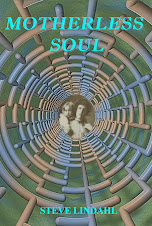The Velvet Hours presents two stories about two women in Paris. One story takes place toward the end of the nineteenth century. The other takes place just prior to the German occupation of France during World War II. The stories are connected because the first woman is the grandmother of the second. This novel is inspired by a true story.
Marthe De Florian is a woman who loved beautiful things. These objects included art that she collected, specifically Asian sculptures. Yet at the same time she was a beautiful thing collected by men of her era. Marthe became pregnant by one of the men in her life when she was a young woman. She wasn't interested in raising a child so she gave this young boy up to a couple who could not have their own. Years later later the young boy is a man who has little to no interest in his birth mother. However, he has a daughter who is a writer and believes that she might get a story from her estranged grandmother. The man introduces them and the novel splits into two stories: Marthe's and Solange's.
The two women are different in the way they give themselves to love. Marthe lived her life at the edge of respectable society. She was a kept woman. Her longest relationship was with a wealthy man who had a wife and a son. They clearly loved each other but his one criteria for their relationship to continue was that she would not interfere with his marriage and life apart from her. Except for one minor incident she kept to this rule. Solange finds her love in a more traditional way when she meets an unattached man and they discover they are attracted to each other.
There isn't a great deal of tension in this novel until the end of Solange's story. Instead its power is drawn from its picture of two eras and the way the writing shows a wonderful appreciation for art and history through the importance of art to the characters. This includes the sculptures I mentioned and a brilliant portrait of Marthe De Florian by Giovanni Boldini. In Solange's story the objects that have the most importance are rare, Jewish books left to her by her mother, including the Barcelona Haggadah, a priceless narrative of the Exodus.
I listened to the audio version which was read magnificently by Tavia Gilbert and Kate Reading. The result was a sensual story created through a combination of beautiful writing and reading.







